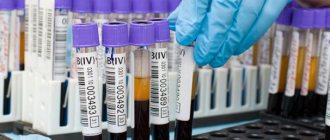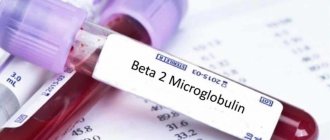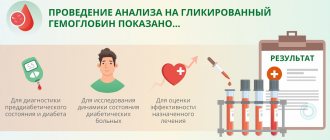AST indicator in blood test
A blood test today is one of the most informative for any doctor.
By the condition of the blood, the quantity and concentration of certain elements in it, one can judge the condition of the internal organs. Thus, the AST indicator in a blood test indicates the health of the liver and heart. AsAt stands for a molecule called aspartate aminotransferase. It is designed to accelerate biochemical reactions in the cells of the body, and analysis of the level of AST allows you to understand whether the liver, heart and other organs are functioning normally.
What does the AST blood test mean?
AST, AST, AST or aspartate aminotransferase is the same concept, denoting one of the enzymes of protein metabolism in the body. This enzyme is responsible for the synthesis of amino acids that make up cell membranes and tissues. AST is not active in all organs. Moreover, this type of aminotransferases can be classified as specific enzymes, the excess activity of which indicates a fairly narrow range of pathological conditions. Most of AST is found in the myocardium (heart muscle), hepatocytes (liver tissue), neurons of the brain and muscle tissue of skeletal muscles. This is explained by a fairly high level of metabolic processes in them and the need for maximum cell adaptability to maintain its structure. This enzyme helps them with this.
As long as the structure of cells containing AST is not disturbed, the amount of this enzyme in the plasma is minimal and does not exceed normal limits. As soon as their integrity is disrupted, this leads to its excessive release into the systemic circulation. This phenomenon will be recorded in the form of a natural increase in AST activity. The dependence should be directly proportional: the more active the cytolysis, the higher the AST level. The time after the onset of cell destruction is important - the longer it is, the less enzyme activity in the plasma will be.
When prescribing a biochemical blood test, they imply an analysis of the enzymatic activity of the plasma, among other indicators of which AST is necessarily examined. This requires venous blood, which is obtained by puncture of one of the peripheral veins in the amount of 15-20 milliliters. Its centrifugation allows you to separate the plasma from the formed elements, which then lends itself to various chemical reactions. During their course, AST activity in the blood is determined.
An AST study allows you to determine the presence of cell destruction (cytolysis) of the myocardium or liver. If other organs are affected, this indicator does not increase. Very often it is prescribed not only to confirm damage to specific tissues, but to carry out differential diagnosis or exclude cardiac and liver pathologies!
AST growth levels
There are three levels of increase in AST in plasma:
- minor – with fatty deposits in the liver, taking certain medications (antibiotics, statins, aspirin, antitumor drugs, barbiturates, etc.);
- medium – for heart attack, heart failure, liver cirrhosis, some types of cancer, alcoholism, autoimmune diseases with muscle damage, taking high doses of vitamin A, lung and kidney damage, muscular dystrophy, mononucleosis;
- high – with multiple liver damage due to viral hepatitis, reactions to drugs and medications, with necrosis of a large tumor.
AST in the blood has diagnostic value in myocardial infarction
The highest level of AST is observed at the onset of the disease with significant tissue destruction. A decrease in the enzyme in the blood means the beginning of liver restoration and recovery. A slight increase in AST is not yet a sign of tissue destruction. An AST level that is more than twice the normal level has diagnostic value.
When is an AST test prescribed?
According to international protocols and standards for diagnosing diseases, a biochemical blood test, including an indicator of AST activity, is mandatory for many types of somatic pathology.
It can be:
- Acute and chronic diseases of the heart and circulatory system;
- Any liver pathology;
- Poisoning and intoxication;
- Kidney damage with renal failure;
- Infectious pathology;
- Purulent-septic conditions;
- Various types of jaundice and disorders of bilirubin metabolism;
- Signs of ascites and portal hypertension;
- Encephalopathy of unknown origin;
- Autoimmune diseases;
- Acute pathology of the abdominal organs of a surgical nature;
- Any forms of cholelithiasis and bile outflow disorders;
- Pancreatic necrosis and chronic pancreatitis;
- Endocrine pathology;
- Allergic skin diseases;
- Malignant tumors of any location and suspicion of their metastasis;
- Aggressive and long-term treatment with chemotherapy, antibiotics and other toxic drugs;
- Preoperative preparation for any complex interventions;
- Assessment of the dynamics and effectiveness of treatment of liver and heart diseases;
- Injuries to the chest and abdomen with suspected contusion of the heart or liver;
Why do they do it?
Using this analysis, the following is carried out:
- Checking the liver for damage.
- Detection of diseases such as liver cirrhosis, hepatitis.
- Finding out the causes of jaundice: liver disease or problems in the circulatory system.
- Checking the effectiveness of the treatment.
- Assessing the effect on the liver of medications that can cause liver damage.
- Diagnosis of heart diseases.
Indications for analysis are all liver diseases
AST analysis allows you to determine cytolysis (the process of cell destruction) of the heart muscle and liver. An increase in this parameter is not observed when other organs are damaged. The purpose of the study is to detect damage to specific tissues, as well as differential diagnosis and exclusion of liver and heart diseases.
Norm of AST in the blood
In order to correctly evaluate the obtained indicators of plasma enzymatic activity in relation to AST, you need to know its normal values. Most laboratories usually indicate the norm next to the result obtained. This is due to the fact that different reagents and methods can be used to determine the AST indicator. The types and standards given in the table are considered generally accepted.
| Determination method | Norm for men | Norm for women | Norm for children |
| Optical (in ME) | Up to 40-41 IU | Up to 34-35 IU | Up to 50 IU |
| Reitman-Frenkel reactions (in mcomol/(h/ml)) | 0,1-0,45 | 0,1-0,35 | 0,2-0,5 |
If a biochemical blood test yields AST values that do not exceed standard values, this indicates the normal functioning of the enzyme systems of the heart and liver and the preserved integrity of the cellular composition of these organs. If there are clinical symptoms of their damage, other specific markers (ALT, troponins, creatine phosphokinase, etc.) must be examined!
Reasons for increased AST
Detection of an increase in AST, especially repeated, may indicate the following diseases:
- Acute myocardial infarction in the initial phases of its development. Based on the dynamics of the indicator, one can judge its extensiveness and recovery period;
- Closed and open heart injuries;
- Myocarditis of autoimmune or infectious origin;
- Acute and chronic viral hepatitis;
- Toxic liver damage from hepatotoxic poisons and drugs;
- Fatty and alcoholic hepatosis;
- Endogenous intoxications against the background of infectious and purulent-septic diseases of internal organs and soft tissues;
- Severe chronic heart failure;
- Cholestasis caused by a mechanical obstruction in the bile ducts (stones, tumors, congenital anomalies);
- Impaired hepatic blood flow and portal hypertension;
- Cirrhosis of the liver with preservation of intact areas of this organ. In decompensated cirrhosis, the enzymatic activity of plasma in relation to AST decreases due to the complete replacement of the liver with connective tissue;
- Metastases to the liver of malignant tumors;
- Primary cancer of the liver or bile ducts;
- Damage to the liver and heart in malignant forms of myeloblastic leukemia;
- Massive destruction of muscle tissue (myodystrophy, generalized myositis, crush syndrome, reperfusion syndrome against the background of restored blood flow in the ischemic limb;
Not every increase in AST should be perceived as a sign of cellular cytolysis. If the indicator is several units of measurement higher than normal values, this does not mean anything. An increase in AST two or more times higher than normal is of diagnostic significance.
In this regard we can talk about:
- Moderate increase (when AST increases five times);
- Average increase (when an increase in the indicator is recorded up to ten times higher than normal);
- Severe elevation (AST level is ten or more times higher than normal).
The main diagnostic value of AST is heart damage during a heart attack. The study is carried out dynamically with short time intervals (about an hour). Any changes in the indicator that exceed the norm, in doubtful cases, speak in favor of a heart attack!
Reasons for the downgrade
A drop in the levels of these enzymes is quite rare. But with certain diseases, AST may decrease below 15 U/l.
A decrease indicates the following diseases:
- Advanced form of liver cirrhosis,
- Death of liver tissue (necrosis),
- Lack of vitamin B6,
- Decrease in the number of working hepatocytes,
When will additional tests be needed? In certain cases, the doctor will not be able to make a diagnosis without sending you for additional examinations.
In case of doubtful tests, they are sent to:
- Determination of ALT, the same important blood enzyme, but mostly located in the heart. If ALT is increased more than AST, then destruction of liver tissue is likely, and in the case of lower corresponding indicators, a heart attack is possible.
- MB reaction of creatine phosphokinase (an enzyme very important for the skeleton and heart muscles). Observe its dynamics.
- Complete ultrasound of the liver, kidneys and heart,
- Testing for troponins . Post-infarction enzymes. Even if their increase in some hours after a heart attack is not great, this still indicates the possible death of the heart muscles,
- Pigment and fat analysis , as well as carbohydrate analysis, are carried out.
How to reduce
It is very important that an AST level higher than normal in the blood does not mean that this is a separate disease, but always follows the progress of some disease. So there are no comprehensive actions aimed specifically at reducing AST.
A high level of AST signals that the cells of the heart, liver or muscles are destroyed. Only restoration of damaged tissues can bring the AST condition back to normal. A qualified doctor can determine the damaged organ based on AST readings.
If the AST level is too high, then this is not the cause - but only a consequence of some pathology.
How to lower AST in the blood?
People who are looking for an answer to a similar question need to clearly understand: an increase in AST is not an independent disease and therefore there are no separate measures to reduce it!
Since this sign signals the destruction of cells containing this enzyme (heart, liver, muscles), it is necessary to diagnose and treat diseases of these organs. Only healthy tissues will be able to function normally and bring all indicators of a biochemical blood test, including AST, back to normal.
It is necessary to clearly understand that an increase in AST is not the cause of the disease. This is its consequence. Therefore, only the elimination of the causative disease can interrupt the cause-and-effect relationship, which will be reflected in the normalization of AST activity and will become a criterion for victory over this disease. Any cases of increased aspartate aminotransferase are a reason to seek specialized medical help. This harmless and asymptomatic sign often hides serious chronic diseases that will only manifest themselves after some time.
Author of the article:
Mochalov Pavel Alexandrovich |
Doctor of Medical Sciences therapist Education: Moscow Medical Institute named after. I. M. Sechenov, specialty - “General Medicine” in 1991, in 1993 “Occupational diseases”, in 1996 “Therapy”. Our authors
How to prepare for donating blood for an AST level test?
It is not difficult to remember how to prepare for donating blood for an AST level test. This is a standard blood test taken from a vein using a vacuum tube. It must be taken on an empty stomach in the morning. At least 8 hours must pass after the last meal. It is important to avoid the use of alcohol and certain medications a week before donating blood, as well as limit physical activity the day before the test.
It is best to donate blood to determine AST levels with the direction of a general practitioner. Before sending you for analysis, the doctor will review your medical history and clarify the details of your well-being. With the results, which will be ready within 1 day, you need to return to the doctor and get an accurate diagnosis, made up of the results of the AST level and other indicators, as well as other symptoms and examination results.











